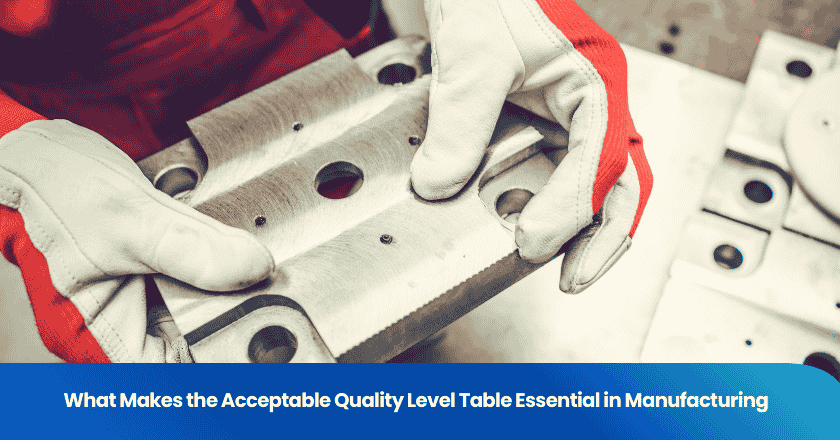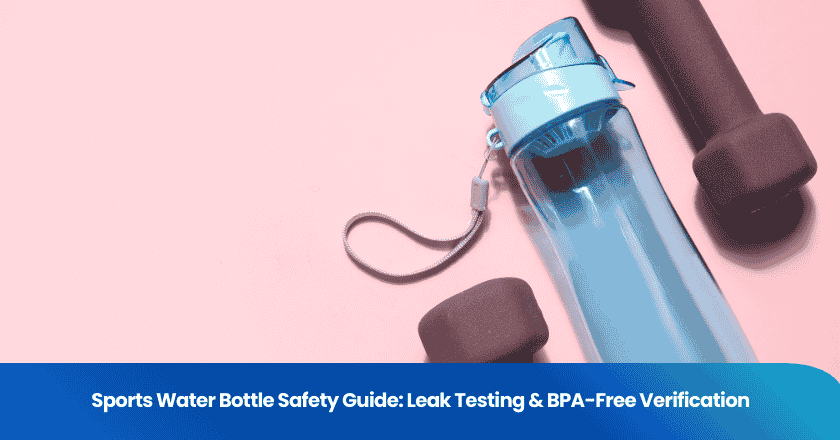
Manufacturers rely on the acceptable quality level table to set clear standards for product inspection. The acceptable quality level table supports inspectors who need to determine if a batch meets specific quality requirements. The table, rooted in ISO 2859, guides decisions that affect both product quality and efficiency. By using the aql method, companies achieve consistent quality control and reduce the risk of defective products reaching customers. The aql approach remains a trusted tool for maintaining quality in diverse industries.
Key Takeaways
- The Acceptable Quality Level (AQL) table helps manufacturers inspect product batches efficiently by setting clear standards for quality.
- Using the AQL table balances inspection effort and risk, saving time and money while ensuring only good products reach customers.
- The AQL method classifies defects as critical, major, or minor, guiding inspectors to make fair acceptance decisions.
- Following the AQL table improves quality control, reduces errors, and boosts customer satisfaction by delivering reliable products.
- The AQL table supports flexible quality levels for different products and helps companies meet industry standards and regulations.
Why the Acceptable Quality Level Table Matters
Quality Control in Manufacturing
Manufacturing companies depend on quality control to maintain high standards. The acceptable quality level table plays a vital role in product inspection. It helps inspectors decide if a batch meets the required quality. By using this table, teams can organize inspection programmes that target specific product quality inspections. The table supports final random inspection and pre-shipment inspections, ensuring that only batches meeting the criteria move forward.
Quality control methods rely on clear guidelines. The table provides these guidelines, making product inspections systematic and consistent. Inspectors use the table to select samples and determine if the batch passes or fails. This process reduces the risk of defective products reaching customers. The table also helps companies meet industry regulations and maintain their reputation for quality.
Note: Consistent use of the acceptable quality level table leads to fewer errors and higher customer satisfaction.
Balancing Risk and Inspection Effort
Manufacturers must balance the need for thorough inspection with the resources available. The acceptable quality level table offers a practical solution. It allows inspectors to choose sample sizes that represent the entire batch without inspecting every item. This approach saves time and money while maintaining quality.
The table sets clear acceptance and rejection criteria. Inspectors know exactly how many defects are allowed before a batch fails. This clarity helps teams manage risk and allocate inspection resources efficiently. By following the table, companies avoid unnecessary delays and keep production moving.
A simple table illustrates how the acceptable quality level table helps balance risk and effort:
| Batch Size | Sample Size | Acceptance Number | Rejection Number |
|---|---|---|---|
| 500 | 50 | 2 | 3 |
| 1,000 | 80 | 3 | 4 |
This structure ensures that inspection remains effective without becoming too costly or time-consuming.
What Is an Acceptable Quality Level Table?
Definition and Purpose
The acceptable quality level table serves as a fundamental tool in manufacturing quality control. This table provides a structured method for determining how many units to inspect from a production batch. Inspectors use the acceptable quality level table to decide if a batch meets the required standards. The table outlines the number of samples to check and the maximum number of defects allowed. This process helps manufacturers maintain consistent quality while managing inspection resources efficiently.
The main purpose of the acceptable quality level table is to balance the need for high-quality products with the realities of production costs and time. By following the aql guideline, companies can set clear expectations for both inspectors and suppliers. The table ensures that everyone understands the acceptable quality level for each product. This shared understanding reduces confusion and supports better communication throughout the supply chain.
Note: The acceptable quality level table helps organizations avoid unnecessary inspections while still protecting customers from defective products.
ISO 2859 and Industry Standards
International standards play a key role in the use of the acceptable quality level table. ISO 2859 stands as the most widely recognized standard for sampling procedures in quality control. This standard defines how to select samples, determine the acceptance quality limit, and interpret inspection results. Many industries rely on ISO 2859 to ensure that their inspection processes align with global best practices.
The aql table, based on ISO 2859, provides a universal language for quality professionals. Companies in electronics, textiles, automotive, and many other sectors use this standard to guide their inspections. The standardization of the acceptable quality level table allows manufacturers to meet regulatory requirements and customer expectations across different markets.
A typical aql chart, derived from ISO 2859, includes columns for batch size, sample size, and acceptance numbers. This format makes it easy for inspectors to apply the standard in real-world situations.
| Lot Size | Sample Size Code | Sample Size | Acceptance Number | Rejection Number |
|---|---|---|---|---|
| 1200 | K | 80 | 2 | 3 |
| 3200 | L | 125 | 3 | 4 |
Acceptance Quality Limit Explained
The acceptance quality limit represents the maximum number of defective items allowed in a sample before a batch is rejected. This concept forms the core of the aql approach. Manufacturers set the acceptance quality limit based on the level of risk they are willing to accept. For example, an acceptance quality limit of 1.5% means that, on average, no more than 1.5% of the items in a batch can be defective.
The acceptable quality level table uses the acceptance quality limit to guide inspection decisions. Inspectors select a sample size and compare the number of defects found to the acceptance number listed in the table. If the defects stay within the acceptable quality limit, the batch passes. If the defects exceed the limit, the batch fails inspection.
Tip: Setting the right acceptance quality limit helps companies control risk and maintain customer trust.
The aql method allows for different acceptable quality levels depending on the product and its intended use. Critical components may require a lower acceptance quality limit, while less critical items may allow a higher limit. The flexibility of the acceptable quality level table supports a wide range of manufacturing needs.
How the AQL Table Works
Sampling Procedures
Manufacturers use aql sampling to determine how many units to inspect from a batch. The process begins with identifying the total lot size. Inspectors then refer to the aql table to select the appropriate sample size code. This step ensures that product inspection covers a representative portion of the batch. Aql testing relies on random selection to avoid bias. For pre-shipment inspections, teams often use aql sampling to verify quality before products leave the facility. The acceptable quality level guides how many samples are needed for effective testing.
Interpreting the AQL Table
The aql table provides clear instructions for product inspection. Inspectors locate the lot size and match it to the sample size code. Next, they choose the aql level setting based on product requirements. For example, a critical medical device may require a stricter aql level setting than a household item. The table lists acceptance and rejection numbers for each sample size and aql level. During aql testing, inspectors compare the number of defects found to these numbers. This process helps teams make objective decisions about batch quality.
Example of acceptable quality level testing:
A manufacturer produces 2,000 units. The aql table indicates a sample size of 80 and an aql level setting of 1.5%. Inspectors find two defective items during product inspection. The acceptance number is three, so the batch passes. This example of acceptable quality level testing shows how the table supports efficient and reliable inspection.
Acceptance and Rejection Criteria
Acceptance and rejection criteria form the backbone of aql testing. The acceptable quality limit defines how many defects are allowed before a batch fails. Inspectors use the aql table to check if the number of defects stays within the acceptable quality level. If defects exceed the rejection number, the batch does not pass product inspections. This system ensures that only batches meeting quality standards reach customers. Aql testing provides a consistent method for evaluating quality and maintaining trust in manufacturing.
Types of Defects in AQL
Critical, Major, and Minor Defects
Manufacturers classify defects into three main categories: critical, major, and minor. This classification helps inspectors evaluate product quality during batch inspections. A critical defect poses a safety risk or causes the product to fail its intended function. For example, in garment manufacturing, a critical defect might include a broken zipper that prevents the garment from being worn. Major defects affect usability or appearance but do not threaten safety. An example of a major defect in garments could be a noticeable stain or incorrect stitching. Minor defects have minimal impact on function or appearance. These might include small loose threads or slight color variations in garment defects.
Inspectors use these categories to determine the acceptable defect rate for each batch. The aql table lists the maximum allowable number of defects for each type. This structure ensures that inspectors can quickly identify which defects require immediate attention and which can be tolerated within the batch.
Note: Proper defect classification supports consistent decision-making and helps maintain product standards across different industries.
Impact on Acceptance Decisions
Defect classification directly influences acceptance decisions during inspection. Inspectors count the number of critical, major, and minor defects found in the sample. If the number of critical defects exceeds the maximum allowable number of defects, the batch fails automatically. Major defects also play a significant role in acceptance. If inspectors find more major defects than the aql table allows, the batch does not pass. Minor defects receive more leniency, but exceeding the limit still leads to rejection.
A simple table illustrates how defect types affect acceptance:
| Defect Type | Maximum Allowable Number of Defects | Example in Garments |
|---|---|---|
| Critical | 0 | Broken zipper |
| Major | 2 | Large stain |
| Minor | 5 | Loose thread |
Inspectors rely on these limits to ensure that defective products do not reach customers. The aql method provides a clear framework for balancing quality and efficiency. By following the guidelines, manufacturers protect their reputation and deliver reliable products.
Benefits of Using the Acceptable Quality Level Table
Improved Quality Assurance
The acceptable quality level table strengthens quality assurance in manufacturing. Teams use this tool to set clear standards for product inspection. Inspectors know exactly what to look for during testing. This approach reduces uncertainty and increases consistency. When companies follow aql compliance, they create a reliable process for identifying defects. The table helps teams catch problems early, which prevents defective products from reaching customers. Quality assurance improves because everyone understands the expectations for each batch.
Note: Consistent use of the table leads to fewer errors and higher confidence in the final product.
Cost and Resource Efficiency
Manufacturers often face pressure to control costs while maintaining high standards. The acceptable quality level table supports efficient use of resources. Inspectors do not need to check every item in a batch. Instead, they use sampling and testing to evaluate quality. This method saves time and reduces labor costs. Companies can allocate resources to other important tasks. The table also helps avoid unnecessary rework or waste. By focusing on representative samples, teams achieve accurate results without overspending.
A simple table shows how sampling reduces inspection workload:
| Batch Size | Items Tested | Time Saved |
|---|---|---|
| 1,000 | 80 | High |
| 5,000 | 200 | Very High |
Customer Satisfaction
Customer satisfaction depends on consistent quality. The acceptable quality level table helps manufacturers deliver products that meet expectations. When teams use structured testing, they reduce the risk of defective items reaching the market. Customers receive reliable products, which builds trust and encourages repeat business. Aql compliance ensures that each batch meets the same high standards. Satisfied customers often share positive feedback, which supports the company’s reputation.
Tip: Reliable product inspection and testing lead to long-term customer loyalty.
The acceptable quality level table stands as a cornerstone in modern manufacturing. It supports teams in maintaining product quality, managing risk, and controlling costs. Companies that use the AQL table see fewer defects and higher customer satisfaction.
Adopting this tool as a standard practice helps manufacturers deliver consistent results and build trust in the marketplace.
FAQ
What does AQL stand for in manufacturing?
AQL stands for Acceptable Quality Level. It refers to the maximum number of defective items allowed in a sample before a batch is rejected. Manufacturers use AQL to set clear inspection standards.
How do inspectors choose the sample size using the AQL table?
Inspectors identify the total batch size. They then use the AQL table to select the sample size code. The table matches batch size to sample size, ensuring a representative inspection.
Why do manufacturers classify defects as critical, major, or minor?
Manufacturers classify defects to prioritize inspection efforts. Critical defects pose safety risks. Major defects affect usability. Minor defects have minimal impact. This system helps inspectors make clear acceptance decisions.
Can the AQL level change for different products?
Yes. Manufacturers set different AQL levels based on product type and risk. For example, medical devices require stricter AQL levels than household goods. The table supports flexible quality standards.
Does using the AQL table improve customer satisfaction?
Absolutely! The AQL table helps manufacturers deliver consistent quality. Customers receive reliable products, which builds trust and encourages repeat purchases.
Grow your business with TradeAider Service
Click the button below to directly enter the TradeAider Service System. The simple steps from booking and payment to receiving reports are easy to operate.



